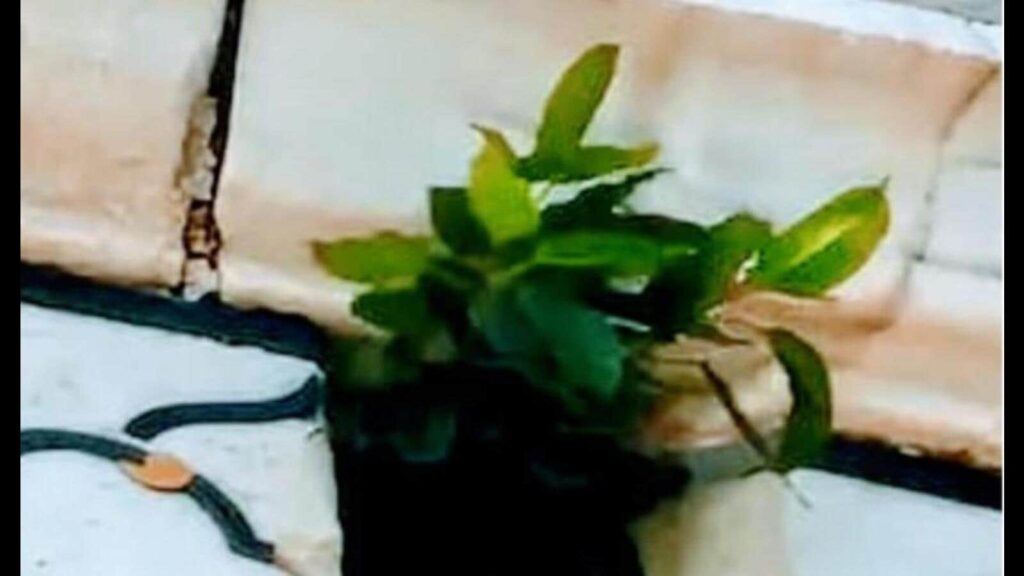Amid concerns over Taj upkeep, ASI brushes aside seepage and plant growth issues

AGRA After viral videos and pictures of water seeping through the Taj Mahal’s main dome, plant sprouting from its marble wall and a submerged garden on the premises of the ivory-white marble mausoleum sparked outrage, the Archaeological Survey of India (ASI) on Thursday chose to brush aside concerns over conservation and maintenance work, saying these issues were normal.

“Plant growth at odd places is not an unusual phenomenon during monsoon, but it is taken care of time to time,” said Raj Kumar Patel, superintending archaeologist, ASI (Agra circle).
“Before the rainy season, the roof-top of monuments and their water outlets are cleaned. I came to know about the report showing sapling growth on Taj walls but could not find it at the spot shown while visiting Taj on Tuesday. As a practice, we remove plant growth in the corners and arches every Friday when the Taj is closed,” he said.
However, Tourist Guides Welfare association president Deepak Daan squarely blamed the ASI for failing in its maintenance and conservation task.
“There is no shortage of funds for the ASI as extra charges are realised from foreign tourists and even from those viewing the main mausoleum of Taj Mahal. The ASI staff deployed at Taj is found more at locations where ‘money making is possible’ than at sensitive points on the premises where they should check any untoward activity,” alleged Daan who plans to meet union minister for tourism and culture to raise such issues.
“The ASI should drop the practice of being in denial mode every time an issue is exposed. Taj Mahal is a world acclaimed monument and any negative publicity spreads fast and damages the image of the nation as a potential tourist spot,” he added.
“If a tourist can see plant growth on the face of the front wall of the main mausoleum, why can’t the ASI staff locate it when the monument is closed on Friday for maintenance and conservation work. How can a tourist have the liberty to bathe in the toilet of Taj Mahal and go unnoticed by ASI staff, “ he alleged.
“Plant growth could not be removed on routine days as the sapling shown in the video was at a height of about 150 feet. Installation of scaffoldings for Taj wall cleaning is a tough task and requires workers to climb up with the help of rope and remove such saplings whenever traced. Many such saplings grow on the exterior walls of Agra Fort and it takes time to remove them,” informed another ASI official.
But Patel said: “No such sapling was found on the dome of Taj Mahal as reported in a section of media. Saplings often grow in the corners of arches and walls of the monument in rainy season but are removed.”
He said there were complaints about water seepage from the dome on September 12, when it rained for three days, but no major seepage was found as the basic architecture of this 17th century monument had provision for drainage of water falling on the dome.
“We are keeping an eye on possible seepage points, but will wait for dry weather before going fixing them. There was water logging in the garden of Taj Mahal on September 12, but we do not drain out the water physically as the monument, built on underground wells, has its recharge mechanism,” added Patel.
“This phenomenon is common in most Mughal monuments built on the banks of river Yamuna in Agra. The decay seen in the painting at Sikandra – the Akbar Tomb – is not because of seepage as its roof was replaced before rains. It is because binding material of the plaster used has gone weak,” said Patel informing that a committee had been constituted to assess the damage.
“Though we have sufficient number of well maintained toilets with signages showing their location but complaint of visitors relieving themselves in the garden surfaced. There are certain locations towards the eastern and western wall of Taj Mahal premises where such violations are found,” claimed Patel.
Besides ASI staff, about two dozen guards from a private agency are deployed at the Taj Mahal that sees nearly 40,000 tourists in a day. The Central Industrial Security Force (CISF) is assigned the task of internal security while the state police is deployed around the monument and has an outpost for Taj Security.
“We have placed notice boards stating ‘not to enter garden’, ‘not to sit on railing’, ‘not to litter’ but there are violations by tourists and thus a decorum needs to be maintained while dealing with them,” said an ASI staff.
This monsoon, the Taj Mahal also witnessed right wing activists entering the monument during Sawan month carrying water bottles and offering water, claiming Taj Mahal to be a Shiva temple (Tejomahalay). Subsequently, the ASI had to impose an ‘undeclared ban’ on water bottles carried by tourists moving to the main platform around the main mausoleum.




